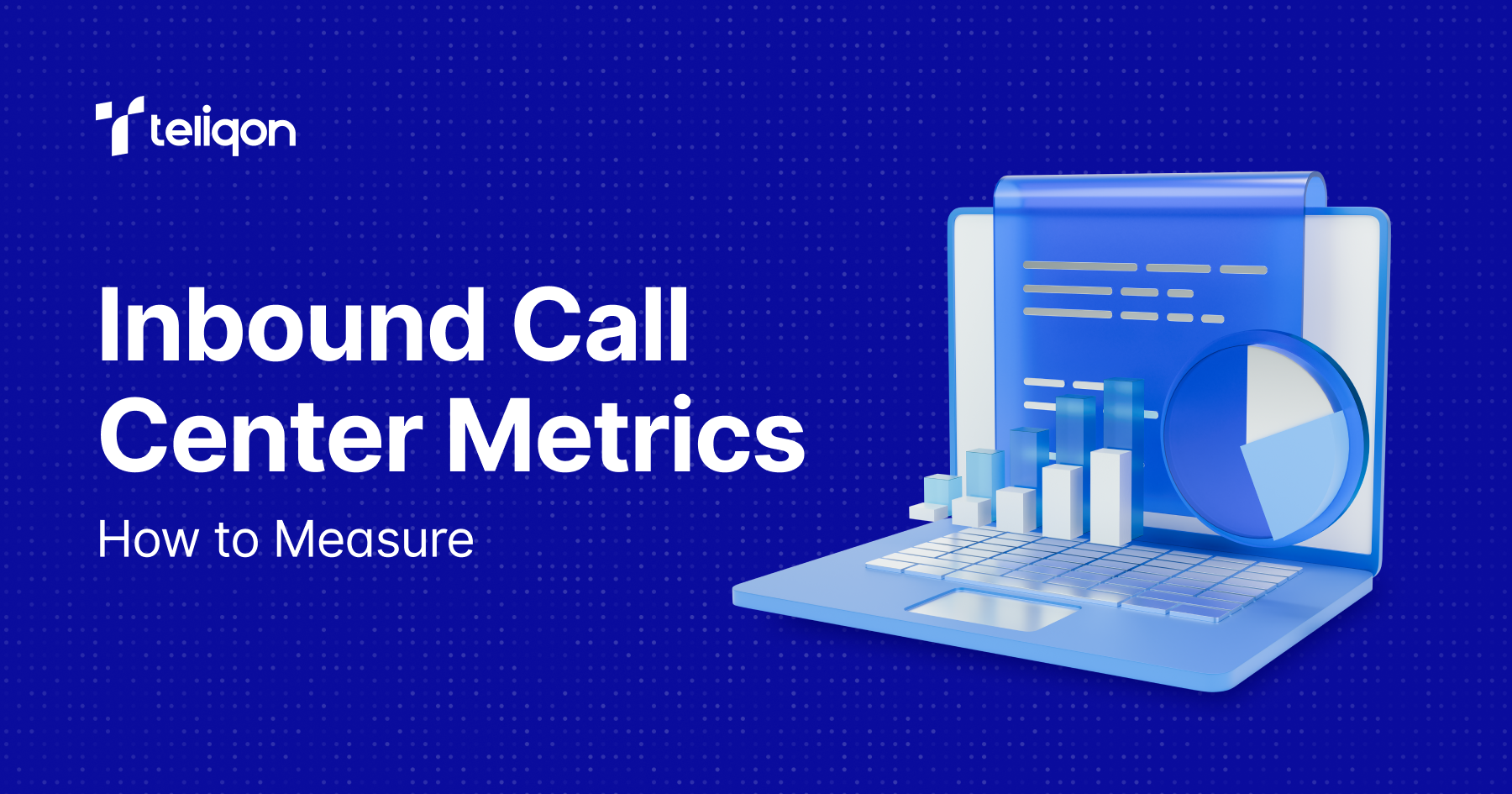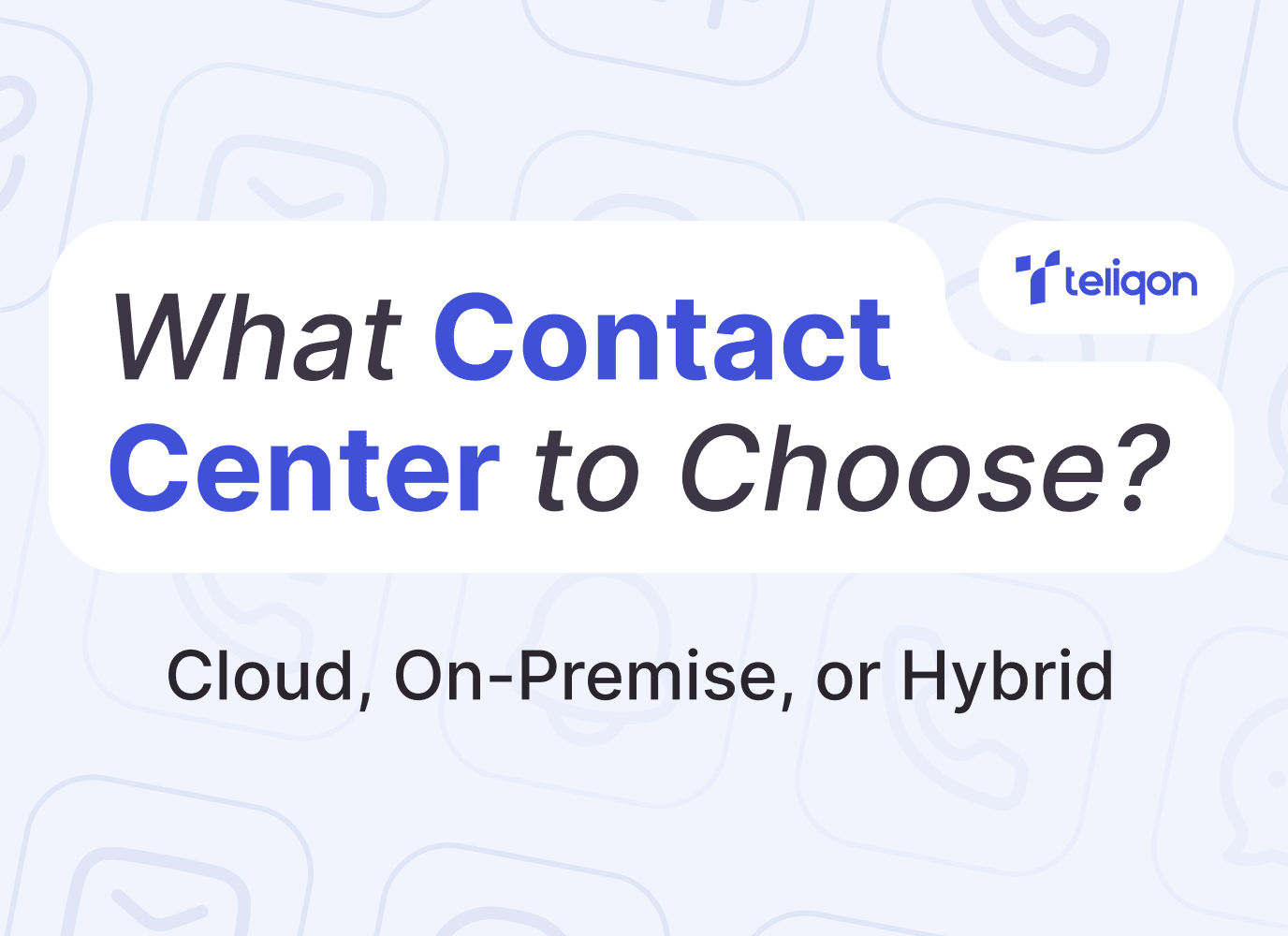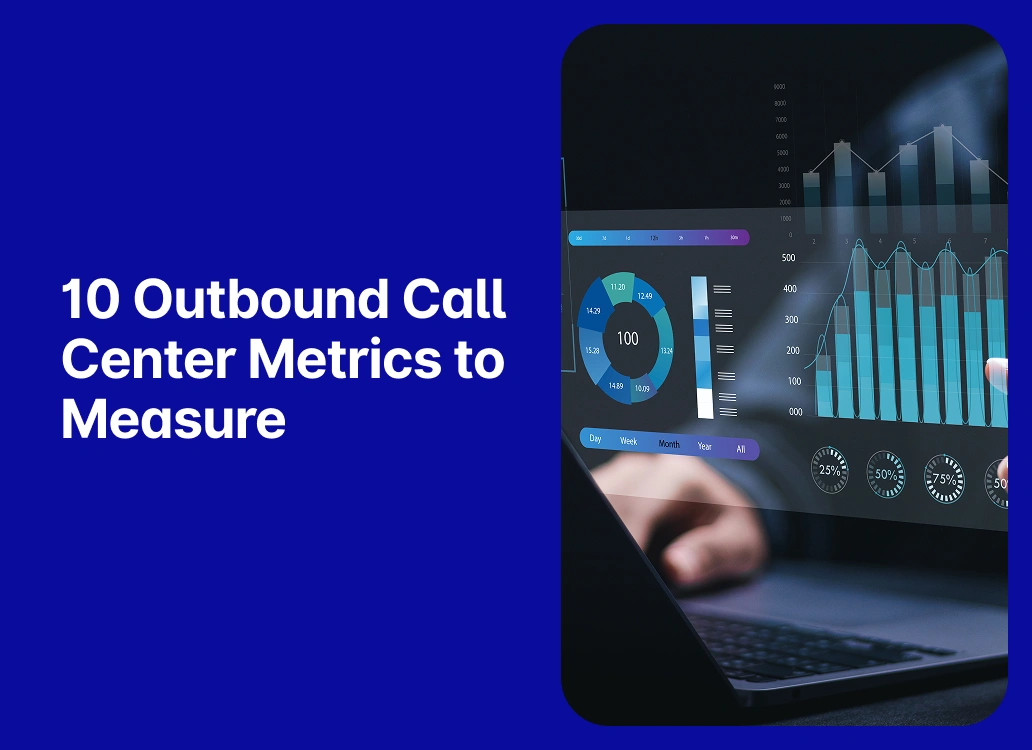

Arthur Kyselevskyi
According to Salesforce, 83% of customers expect to resolve complex problems through a single person. Yet, many call centers struggle with long wait times, high call abandonment rates, and agents juggling too many calls at once. If your inbound call center isn’t tracking the right metrics, it’s nearly impossible to know where the real bottlenecks are – or how to fix them.
That’s where data-driven decision-making comes in. The best-run inbound call centers don’t just guess what’s working; they track key performance indicators (KPIs) consistently to measure agent productivity, customer experience, and overall service efficiency. From how fast calls are answered to how many issues get resolved on the first try, these numbers give you a clear picture of what’s going well – and what needs work.
In this guide, we’ll break down the most important inbound call center metrics and why they matter. Plus, we’ll share practical strategies to improve them, helping you create a more efficient, customer-friendly call center with better-trained agents, smoother operations, and happier customers.
Key Differences Between Inbound & Outbound Contact Centers & Their Metrics
Let’s clear up any confusion before diving into the details. If you’ve researched call center performance metrics, you’ve likely come across different measurement systems – some designed for inbound teams, others for outbound operations. That’s because inbound and outbound call centers serve very different purposes, and their success is measured differently.
Inbound call center metrics and responsibilities focus on handling incoming calls from customers looking for support, information, or help with an issue. Their performance depends on how quickly and effectively those issues get resolved – which makes First Call Resolution (FCR), Average Handle Time (AHT), and Call Abandonment Rate standard inbound call center metrics, essential for tracking success.
Outbound call centers work the other way around: agents proactively reach out to customers for sales, follow-ups, or marketing campaigns. Here, it’s all about sales effectiveness and outreach. Key metrics include Call-to-Conversion Rate, Pickup Rate, and Revenue per Call. If you want to understand inbound/outbound call center metrics dichotomy more clearly, we covered outbound call center metrics in more detail in this article.
|
Aspect |
Inbound Call Center |
Outbound Call Center |
|---|---|---|
|
Purpose |
Customer support, service, retention |
Sales, lead generation, marketing campaigns |
|
Call Direction |
Customers call in for help |
Agents call out to customers or leads |
|
Key Focus |
Problem resolution, fast response times, customer satisfaction |
Sales effectiveness, agent productivity, conversion rates |
|
Typical Metrics |
FCR, AHT, FRT, Call Abandonment, CSAT |
Call-to-Conversion Rate, Calls per Agent, Pickup Rate, Revenue per Call |
The fundamental difference? Inbound is reactive, waiting for customers to initiate contact, while outbound is proactive, reaching out to engage them. Because of this, inbound call centers prioritize service quality and efficiency, while outbound call centers measure sales and engagement performance.
This article focuses on inbound call center performance metrics – the key performance indicators (KPIs) that determine how well your team is handling customer inquiries and ensuring a seamless experience. Let’s break down the most important inbound call center metrics and how to improve them.
Key Inbound Call Center Metrics
First Response Time (FRT)
Calculation formula: Average First Response Time = Sum of First Response Times/ Total Number of Inquiries
First Response Time (FRT) tracks how quickly an agent answers an incoming call. When customers reach out, they expect a fast response. If they have to wait too long, they may hang up, get frustrated, or even take their business elsewhere.
To optimize it, make sure your call routing system is doing its job efficiently – getting callers to the right agent quickly, without bouncing them between departments. Slow FRTs can point to staffing gaps or clunky routing logic. Analyzing FRT trends over time helps you anticipate peak periods so you can adjust staffing and call flows before delays pile up.
Keeping this number low helps reduce call abandonment and improves overall customer satisfaction. As a benchmark, aim for a response time under 20 seconds: that’s where expectations and experience align.
Average Speed of Answer (ASA)
Calculation formula: ASA = Total Waiting Time for Answered Calls / Total Number of Answered Calls
Among other inbound sales call center metrics, ASA measures the average time it takes for an agent to pick up a call once it reaches the queue. Unlike FRT, this doesn’t include time spent in an IVR system – only the actual wait time before speaking to an agent.
Long ASA times often point to problems like understaffing, inefficient scheduling, or bottlenecks in call routing. To improve this, ensure you have the right number of agents available during peak hours and use automation to handle simple inquiries. Many call centers aim for an ASA of 15 seconds or less, as longer wait times can drive customers to abandon calls.
First Call Resolution Rate (FCR)
Calculation formula: FCR = (Total Number of Calls Resolved on the First Contact / Total Number of Calls Received) x 100
FCR measures the percentage of inbound calls resolved without the customer needing to call back or escalate the issue. It shows if calls are resolved during the first interaction, without the customer needing to call back or be transferred. It’s a key indicator of efficiency and customer satisfaction.
A high FCR means your agents have the knowledge and tools to resolve customer queries effectively, while a low FCR suggests that customers are getting transferred too often, agents lack the knowledge to resolve issues, or internal systems aren’t providing the right information.
Tracking FCR helps identify training gaps, inefficiencies in knowledge bases, and technical issues that require multiple interactions. This progress will give you the basis to train agents properly, adding up knowledge where it’s low, enhance knowledge bases, and integrate CRM systems with call center software.
Average Handle Time (AHT)
Calculation formula: AHT = (Total Talk Time + Total Hold Time + After-Call Work)/ Total number of Calls
AHT is the total duration of customer interaction, including talk time, hold time, and after-call work. It’s a key productivity metric, but it requires a balance – too high, and efficiency drops; too low, and quality may suffer.
Reducing AHT isn’t about speeding up calls but about making them more efficient: you can reach it by integrating CRM tools for quick access to customer data and training agents in effective communication. Aim for an AHT that balances efficiency with quality, ensuring issues are resolved without unnecessary delays.
Average Call Transfer Rate
Calculation formula: Transfer Rate = (Number of Calls Transferred / Total Number of Calls Handled) x 100
One of metrics call center inbound, this one tracks how often a call is transferred to another agent or department. High transfer rates mean customers are bouncing around before getting the help they need, which can be frustrating.
Common causes include poor call routing, agents lacking the right knowledge, or unclear escalation processes. To reduce unnecessary transfers, set up skill-based routing to connect callers to the right agent from the start. Also, give agents better training and access to customer information so they can handle a wider range of issues.
Call Abandonment Rate
Calculation formula: Abandonment Rate = (Number of Abandoned Calls / Total Number of Inbound Calls) x 100
This measures the percentage of callers who hang up before reaching an agent. A high abandonment rate means customers are waiting too long and losing patience.
Customers typically abandon calls when wait times exceed 30 seconds, especially if they don’t know how long they’ll be waiting. To reduce this, provide estimated wait times, offer a call-back option, and improve staffing during peak hours. A healthy call abandonment rate is usually below 5%.
Repeat Call Rate
Calculation formula: Repeat Call Rate = (Number of Repeat Calls / Total Number of Calls) x 100
Repeat Call Rate measures how often customers call back about the same issue – and a high number usually points to something being missed the first time. It could be unresolved problems, vague answers, or agents lacking the tools to fully address the issue on the spot.
Keeping this rate low does two things: it improves customer satisfaction and eases the burden on your team. The fix starts with better resources: give agents access to a well-maintained knowledge base, invest in targeted coaching, and use post-call surveys to catch recurring issues before they snowball.
Percentage of Calls Blocked
Calculation formula: Percentage of Calls Blocked = (Calls That Fail to Reach Agents / Total Number of Calls) x 100
This metric measures how many inbound calls are blocked due to system limitations, full queues, or insufficient capacity. A high blocked call rate suggests inadequate call center infrastructure or inefficient call flow management.
Scaling capacity, improving IVR efficiency, and load balancing across multiple call centers or remote agents can minimize blocked calls. Ideally, this rate should be below 2%.
Service Level
Calculation formula: Service Level = (Number of Calls Answered in Y seconds /Total Calls Received) x 100
Service level tracks the percentage of incoming calls answered within a set time – for example, 80% of calls answered within 20 seconds. It’s a core metric that shows how well your team balances speed with service quality.
Hitting your service level goals takes more than just fast answers – it requires accurate forecasting, smart scheduling, and automation where it makes sense. Tools that help predict call volume and manage real-time staffing make a big difference. A consistently strong service level sends a clear signal that your call center runs smoothly, and your customers don’t wait long to get the help they need.
After-Call Work Time (ACW)
Calculation formula: ACW = Total Time Required to Finish all Post-Call Tasks / Total Number of Calls
After-call work time is the time agents spend wrapping up tasks after a call, like entering notes, updating records, or sending follow-ups. It’s a necessary part of the process, but if it drags on too long, it limits how many calls an agent can handle in a day.
The good news – ACW can often be reduced with the right tools. Smart CRM integrations, automated call summaries, and streamlined workflows can cut down manual steps and keep agents available for more calls. The goal isn’t to rush post-call work, but to make it efficient, so important details are captured without bogging down your team.
Cost per Call (CPC)
Calculation formula: CPC = Total Cost of all Calls / Total Number of Calls
CPC calculates how much each inbound call costs your company, factoring in agent salaries, software, and infrastructure expenses. It’s a key metric for cost efficiency.
A high CPC might mean your agents are spending too long on calls, your staffing is inefficient, or your call volumes are too low. To lower CPC, focus on improving agent productivity, reducing AHT, and automating routine tasks without sacrificing service quality.
Agent Utilization Rate
Calculation formula: Utilization Rate = (Total Talk Time + Total After-Call Work Time) / (Total Work Hours x 60) x 100
Agent Utilization Rate shows the percentage of an agent’s working time spent actively handling calls. While higher utilization suggests efficiency, overworked agents can burn out quickly.
The ideal utilization rate balances productivity with agent well-being. Most call centers aim for a utilization rate of 75-85%, ensuring agents stay engaged but not overwhelmed.
Agent Schedule Adherence
Calculation formula: Schedule Adherence Rate = (Total Minutes Worked / Total Scheduled Minutes) x 100
In terms of metrics for call center inbound, this tracks how well agents follow their assigned schedules, including breaks, shift start times, and meetings. Low adherence can lead to long wait times, missed calls, and service level failures.
Improving adherence starts with clear communication, real-time monitoring, and flexible scheduling. Incentives for on-time performance can also help encourage agents to stay on schedule.
Customer Satisfaction Score (CSAT)
Calculation formula: CSAT Score = (Number of Satisfied Responses / Total Number of Responses) x 100
CSAT measures customer happiness by asking, “How satisfied were you with your experience?” Customers rate their satisfaction on a scale (e.g., 1-5 or 1-10).
CSAT is one of the most direct indicators of service quality. Improving it requires faster response times, better agent training, and collecting feedback to address recurring issues. A score above 80% is typically considered strong.
Customer Effort Score (CES)
Calculation formula: CES = Total Sum of Responses / Total Number of Responses
CES measures how easy or difficult it is for customers to get their issues resolved. If customers struggle to navigate your IVR, repeat themselves, or get transferred too often, their effort score will be high – and that’s not a good thing.
A lower CES means a smoother customer experience. Reducing it involves simplifying IVR menus, training agents to handle more issues on their own, and offering self-service options for simple inquiries.
Net Promoter Score (NPS)
Calculation formula: NPS = % Promoters – % Detractors
NPS tracks customer loyalty by asking, “How likely are you to recommend us?” Customers rate their likelihood on a scale of 0-10. Scores of 9-10 are promoters, 7-8 are neutral, and 0-6 are detractors.
A high NPS means customers aren’t just satisfied: they’re advocates for your brand. To improve NPS, focus on delivering fast, effective, and pleasant customer interactions while reducing friction in the support process.
Final Thoughts
Inbound call centers are often the first point of contact for your customers – how those calls are handled sets the tone for the entire relationship. Just picking up the phone quickly won’t do – it’s about connecting people to the help they need, minimizing friction, and solving problems the first time around.
Improving key call center inbound metrics like average wait time, abandonment rate, and first call resolution isn’t a one-time project – it’s an ongoing process of measuring, refining, and adapting. And the right tools make all the difference.
Teliqon’s Cloud PBX is designed for exactly that. With features like intelligent call routing, real-time queue visibility, and CRM integration built in, your team gains the insight and control it needs to deliver faster, more efficient service. When every second counts, having the right setup behind your inbound call center means more satisfied customers and less chaos for your agents.
The latest from Teliqon
Stay ahead with insights from the leader in trusted communications. Subscribe for the latest blogs, updates, and exclusive content.



